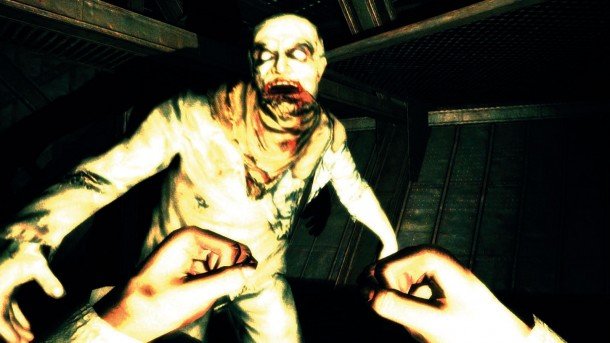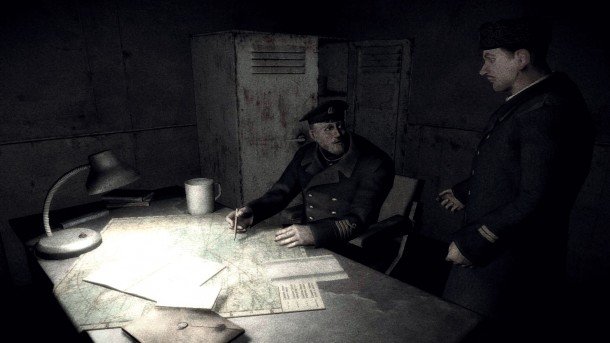Reinstall: Cryostasis

This article first appeared in issue 241 of PC Gamer UK.
I first played Action Forms' icebound horror shooter for a review in another magazine – and I can't say I got it right. Nothing I said was exactly wrong, either, checking off the repetitious rooms of glum-looking bulkheads, the imprecise melee combat and eventual descent into gormless, clumsy gunfire. And yet, three years later, I still find myself thinking about this game and occasionally shivering. For all the monotony of its spaces, for all the trite jump scares, its atmosphere is deeply, enduringly freakish and, above all else, cold.
“BioShock on Ice” is the easy-reach slogan and, budget and execution aside, it's not such a bad fit. Both games have a protagonist of unknown purpose rediscover an isolated civilisation, left to stew in its madness for decades. BioShock's is Rapture, the city under the sea, where grand ideals have gone horribly awry; Cryostasis takes place on a Russian ship, the North Wind, paralysed by the vanity of its captain, the rancour of his subordinates and no small amount of ice. Twenty years have passed and its crew have starved and frozen or worse, and the player finds himself stumbling through the frigid bowels of this derelict vessel, slowly piecing together the ship's fateful last days.
The revelation Cryostasis reaches may be garbled, but the initial mystery is just as effective as BioShock's. And though the frozen cabins and engine rooms have none of Rapture's grandeur, they are charged with a similar elemental threat. The ocean is slowly drowning and reclaiming BioShock's shattered submarine city, but here on the North Wind the ice has already done its work – and there is something stirringly awesome and implacably malevolent about the way that natural force has consumed the vessel.

The task here isn't just survival, but resurrection: finding the means to get parts of the ship whirring back into life. As they do so, the fronds of ice that emboss every surface recede and streak into liquid. Icicles drop from their perches to shatter on the floor. Doors loosen and mechanisms thaw out, enabling your passage from one sequence of claustrophobic rooms to the next.
Heat is health here, and your life depends on huddling beside anything that may momentarily raise your temperature – even, rather fancifully, a lightbulb. But the dial measuring your body heat soon drops, making prolonged sorties between heat sources tense. While there are only a few opportunities to freeze to death by misadventure, it's soon apparent that there are other things on board – things that once were the ship's crew. Now they are white-eyed horrors, beards matted with frost, which lurch from the shadows at any given opportunity, hissing and wailing. You can't help but panic – the sludgy melee system recreates the sort of exhausted, ineffectual combat you might expect from someone padded out like a seal-skin Michelin Man.
Cryostasis deploys these shocks with gruelling regularity, but not without skill. One exhausting sequence sees you navigate a flooded engine room in a dinghy, nervously flitting its single spotlight around the dark, silent interior. The inevitable happens, but is no less horrid for it: a sudden eruption rocks the boat as a dead man claws his way in, unseeing eyes and face split wide open like an angler fish.
Keep up to date with the most important stories and the best deals, as picked by the PC Gamer team.

One of the game's oddest gimmicks is that you are occasionally required to travel back in time, using the bodies of dead sailors to relive their last moments, cast in the grainy saturation of old film stock. If you can avert their death, you can alter the ship in the present, and progress. It's only an option at prescribed moments, and the means of survival are often clumsily handled, but there's a potent dramatic irony in knowing the man's fate and then working to avoid it.
Sudden, fleeting visions of the past also allow the designers to deploy jump-scares wherever they please, resulting in a constant sense of vulnerability. Additionally, it's the means of delivering backstory: you get to watch crewmen desperately reinforce a bulkhead as the water pours in, or eavesdrop on the arguments between the ship's commanding officers.
It's effective writing, even if the voice-acting is halting and hokey. On the prow of the ship, the captain dismisses the advice of his subordinate – an ambitious young officer who wants the captaincy for himself. As the officer lays out his case for avoiding an ice floe, the Captain folds the data printout he's been given into an origami boat before pressing it into the younger man's hand, brusquely suggesting that this may be a more fitting command for the officer's skills.

Interspersed with the plight of the ship is another story, revealed through illustrated papers the player occasionally discovers. It's a retelling of Maxim Gorky's fairytale The Flaming Heart of Danko – a parable of demented leadership that echoes the crew's own failing trust in their captain, and his increasingly reckless attempts to recover it.
The appearance of these pieces of paper isn't given any explanation, beyond their obvious symbolism, and it's far from the only thing to lack satisfying resolution. How the player is able to straddle time remains a mystery, and there's no attempt to suggest how the dead crew can come back to life or why they are so intent on your demise. The later enemies – hulking sentries with shoulder-mounted spot-lights and tommy-guns apparently welded to their forearms – clearly have no place in this story, and although the North Wind's fate is neatly concluded, much of the game remains bafflingly incongruous.
Though it ultimately unravels, Cryostasis offers a powerful, rare kind of horror, eschewing hysterical demonic imagery in favour of a more earthy, unsettling folkloric parable. Men are cursed by their own hubris, and annihilated by the merciless, malevolent ice. Playing it now, the game's chill still cuts through hot water bottles, fingerless mittens and thermal underwear. While the rest of the game crumbles and falls away like an ice sheet, its frozen centre remains perfectly preserved.

